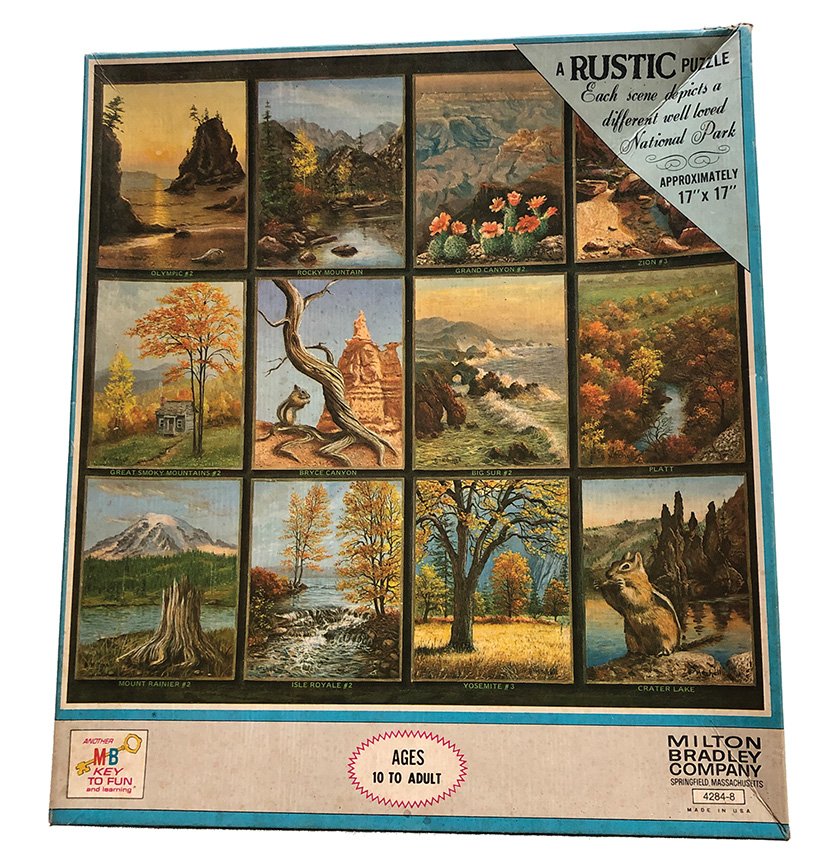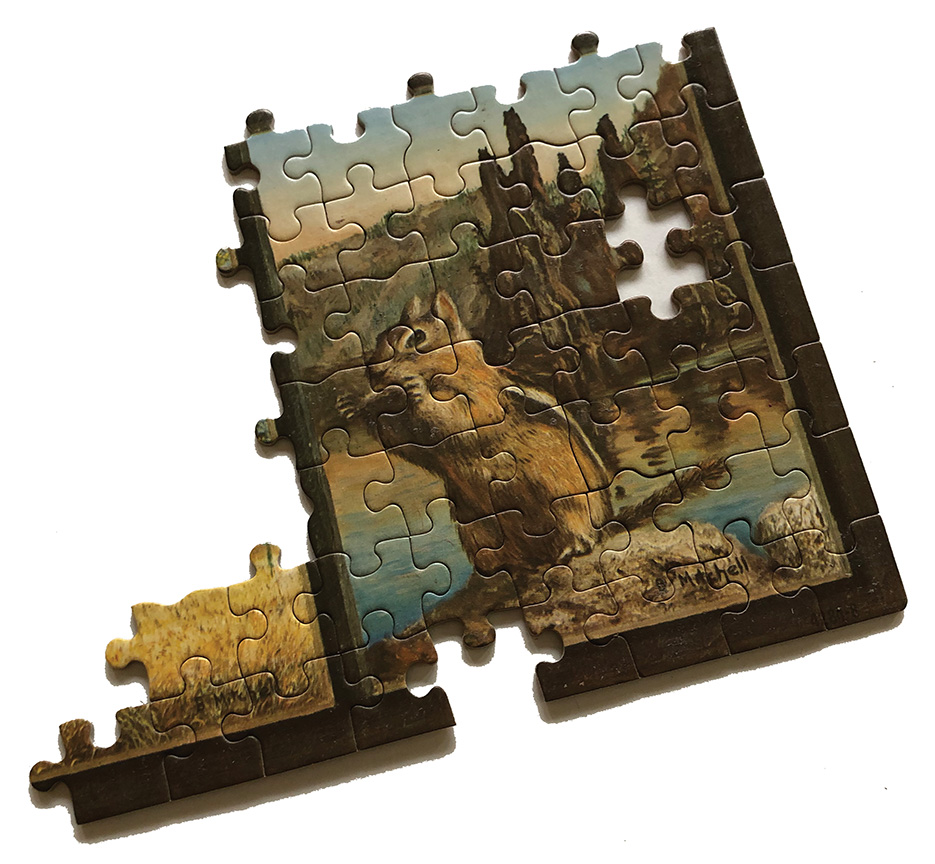
Dorri Partain
Contributor
The natural beauty of America’s National Parks has been featured on calendars and puzzles for decades. As we begin a summer-long road trip via historic postcards, we’ve found a puzzle featuring various scenic vistas from the National Parks.
A “Rustic Series” (No. 4284-8) showcases 12 scenic views painted by an artist only known as Mitchell. The Rustic Series featured outdoor scenes separated by wooden panes and a frame resembling a window and was produced by the Milton Bradley Company.
Milton Bradley (1836-1911) created his first board game, “The Checkered Game of Life,” in 1860. Before the invention of either radio or television, board games proved to be a very popular form of entertainment. Puzzles were added to the expanding line of games in 1880.
The creation of the first puzzle around 1767 is attributed to English mapmaker John Spilsbury, who had the idea to glue a map onto a thin board, then cut out the shapes of the countries with a scroll saw as a tool to teach children geography.
Until the die-cutting machine was invented during the 1930’s, all puzzles produced were hand cut and often a cottage industry using colored pictures cut from magazines. Pieces could be simple squares or more intricate, following the lines of the picture, while others could be random shapes cut at the maker’s whim.
McLoughlin Brothers, a lithography printing company, devised a puzzle style that had interlocking pieces around the border, with simple square cuts in the center. With the die-cutting machine’s ability to make pieces more uniform and smaller, interlocking pieces that would stay in place became the standard style.
Measuring 17 by 17 inches with over 500 pieces, the puzzle showcases the following National Parks: Yellowstone, Olympic, Isle Royale, Rocky Mountain, Great Smoky Mountain, Zion, Bryce Canyon, Crater Lake, Yosemite, and Mount Rainier. Two scenes are labeled Big Sur and Platt, which are not national parks.



















